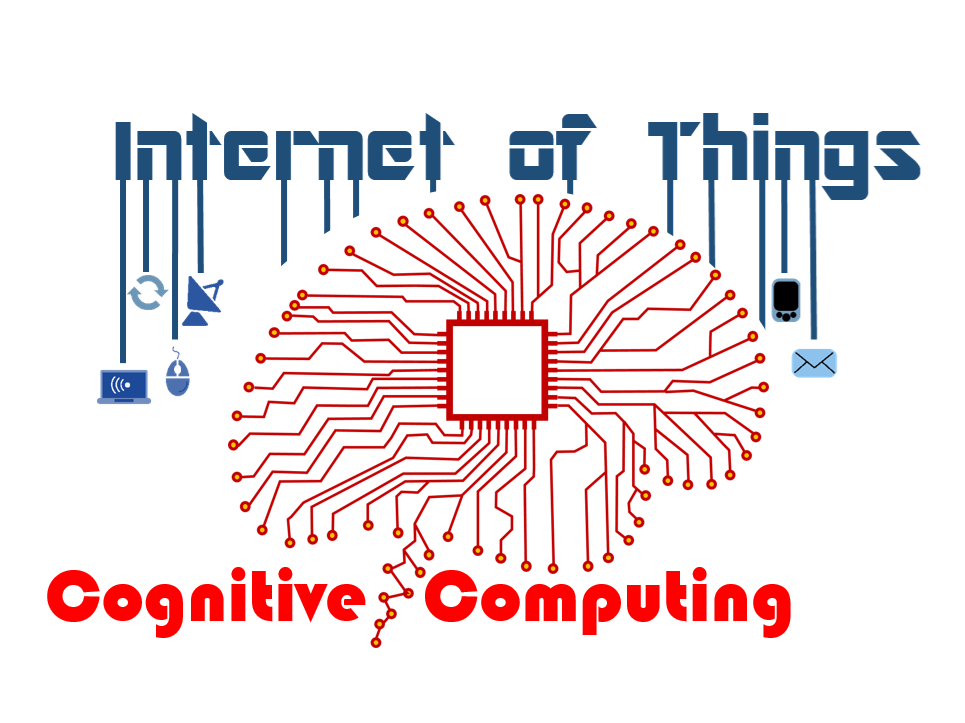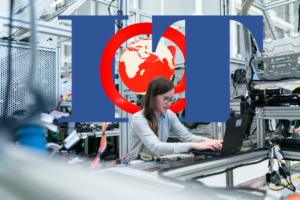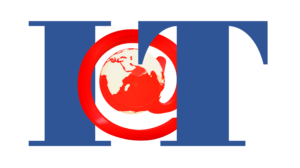The Internet of Things (IoT) is a big concept that will be uniquely implemented in various economic and government sectors. Victoria Greene (@vickyecommerce), a Brand Marketing Consultant, believes the best way to understand the IoT is to discuss it in terms your grandparents would understand. “Chances are, your grandparents haven’t heard of IoT (unless they are very ‘down with the kids’),” she writes. “So, where would you even start with how to explain IoT to them?”[1] Here is her basic definition of the IoT:
“Basically, it refers to the concept of connecting everything to the Internet in some way or another: from smartphones and tablets (normal), to cars and fridges (emerging). IoT is about how tools, services, applications can all be connected to the Internet to make them more useful, and there’s really no limit to what can be connected to the Internet and why. One of the key ways in which IoT will improve lives is in the way in which it makes sharing data a whole lot easier: IoT will help simplify our lives and take away some menial tasks in the long run.”
That definition is a bit deceiving because it leaves the impression that Internet of Things is a single network that connects all things. In reality, the IoT is network of networks that primarily connects “things” as opposed to people. Since the Internet of Things fosters machine-to-machine communication, some pundits prefer the term Industrial Internet of Things. Other experts believe the line between the Internet (aka the World Wide Web, which primarily provides human-to-human connectivity) and the Internet of Things will blur so completely we will simply talk about the Internet of Everything in the years ahead. Greene adds, “IoT is already part of your life — without you even realizing it. Connecting everything to the internet will only make life easier.”
The Internet of Things and Future Opportunities
Annie Qureshi (@annierqureshi), a young entrepreneur, asserts, “The Internet of Things is in the wild west phase of its development.”[2] Although this presents some challenges for implementing IoT solutions — such as having to deal with a lack of standards — Qureshi believes it also means opportunities abound. John Leonard (@_JohnLeonard), Research Director at Computing, agrees with that assessment. “While almost everybody expects very big things of the IoT,” he writes, “at the moment it is still very much a minority play.”[2] Leonard reports that respondents to a UK business survey believe over the next three years companies will “be using almost all aspects of IoT networking a lot more, so those technologies with minimal uptake today, such as blockchain and smart contracts, are anticipated to see a huge leap adoption, although it should be noted that many of these technologies are still immature.” Qureshi believes three of the most promising areas for near-term IoT adoption are in transportation (fleet management); small businesses (leveling the playing field with larger companies); and health & fitness. She concludes, “Business experts expect the IoT to explode by 2020 with more than 34 billion unique devices interconnected via the internet which means the opportunities for small businesses, large corporations, and individuals will continue to increase. The world will continue to become more accustomed to having their every movement, thought, and sound recorded, analyzed. This will lead to a greater demand for these types of devices and a greater supply from which consumers can choose.”
IoT Technologies
When someone talks about implementing an IoT solution, they are generally referring to an IoT ecosystem consisting of sensors, networks, and analytics. According to Nick Jones, a vice president and distinguished analyst at Gartner, the top ten emerging IoT technologies are:[4]
1. IoT Security. “Security technologies will be required to protect IoT devices and platforms from both information attacks and physical tampering, to encrypt their communications, and to address new challenges such as impersonating ‘things’ or denial-of-sleep attacks that drain batteries. IoT security will be complicated by the fact that many ‘things’ use simple processors and operating systems that may not support sophisticated security approaches.” Lisa Froelings (@LisaFroelings), a productivity consultant, adds, “Security for IoT systems is therefore one of the biggest technologies in IoT at the moment and will likely experience exponential growth in the future.”[5]
2. IoT Analytics. “IoT business models will exploit the information collected by ‘things’ in many ways, which will demand new analytic tools and algorithms. As data volumes increase over the next five years, the needs of the IoT may diverge further from traditional analytics.” According to Froelings, “With the right analytics software, businesses could surmise what consumers need and want with greater accuracy and efficiency. … Efficacious IoT analytics software is therefore in high demand.”
3. IoT Device (Thing) Management. “Long-lived nontrivial ‘things’ will require management and monitoring, including device monitoring, firmware and software updates, diagnostics, crash analysis and reporting, physical management, and security management. Tools must be capable of managing and monitoring thousands and perhaps even millions of devices.”
4. Low-Power, Short-Range IoT Networks. “Low-power, short-range networks will dominate wireless IoT connectivity through 2025, far outnumbering connections using wide-area IoT networks. However, commercial and technical trade-offs mean that many solutions will coexist, with no single dominant winner.”
5. Low-Power, Wide-Area Networks. “Traditional cellular networks don’t deliver a good combination of technical features and operational cost for those IoT applications that need wide-area coverage combined with relatively low bandwidth, good battery life, low hardware and operating cost, and high connection density. Emerging standards such as narrowband IoT will likely dominate this space.”
6. IoT Processors. “The processors and architectures used by IoT devices define many of their capabilities, such as whether they are capable of strong security and encryption, power consumption, whether they are sophisticated enough to support an operating system, updatable firmware, and embedded device management agents. Understanding the implications of processor choices will demand deep technical skills.”
7. IoT Operating Systems. “Traditional operating systems such as Windows and iOS were not designed for IoT applications. They consume too much power, need fast processors, and in some cases, lack features such as guaranteed real-time response. They also have too large a memory footprint for small devices and may not support the chips that IoT developers use. Consequently, a wide range of IoT-specific operating systems has been developed to suit many different hardware footprints and feature needs.”
8. Event Stream Processing. “Some IoT applications will generate extremely high data rates that must be analyzed in real time. Systems creating tens of thousands of events per second are common, and millions of events per second can occur in some situations. To address such requirements, distributed stream computing platforms have emerged that can process very high-rate data streams and perform tasks such as real-time analytics and pattern identification.”
9. IoT Platforms. IoT platforms bundle many of the infrastructure components of an IoT system into a single product. The services provided by such platforms fall into three main categories: Low-level device control and operations such as communications, device monitoring and management, security, and firmware updates; IoT data acquisition, transformation and management; IoT application development, including event-driven logic, application programming, visualization, analytics and adapters to connect to enterprise systems.” Froelings adds, “Cognitive computing, whereby machines use data mining and pattern recognition to self-learn and self-improve, is currently being applied to IoT. Cognitive computing can create thinking, reasoning devices through the power of machine learning.”
10. IoT Standards and Ecosystems. “Standards and their associated application programming interfaces (APIs) will be essential because IoT devices will need to interoperate and communicate, and many IoT business models will rely on sharing data between multiple devices and organizations. Many IoT ecosystems will emerge, and organizations creating products may have to develop variants to support multiple standards or ecosystems and be prepared to update products during their life span as the standards evolve and new standards and APIs emerge.”
Summary
Froelings concludes, “The Internet of Things is already revolutionizing how we interact with our homes. Soon, it may affect how we interact with our cities, how business interact with their consumers and how enterprises interact with each other. As our objects become interconnected, our need for greater security and analytics deepens. As powerful processors become commoditized, we’ll need more complex IoT operating systems, which will require robust platforms to allow these varied systems to communicate. Managing such a gigantic pool of devices and data will most certainly require self-repairing, self-learning machinery, which will lead to a surge in the interest for Cognitive IoT. These technologies are hurtling IoT into the future. Inventive engineers will most certainly take the Internet of Things into its next step, connecting people to their devices, and the past to the future.” All of this may be too much for your grandparents to understand, but every business executive needs to understand how the IoT is going to change the future.
Footnotes
[1] Victoria Greene, “How to Explain IoT to Your Grandparents,” IoT For All, 8 July 2017.
[2] Annie Qureshi, “IoT: An Open Ocean of Opportunities,” Datafloq, 25 April 2017.
[3] John Leonard, “IoT: early adoptors anticipate a surge in adoption, research,” Computing, 7 April 2017.
[4] Staff, “Top 10 Emerging IoT Technologies You Need to Know,” Material Handling & Logistics, 15 April 2016.
[5] Lisa Froelings, “Top 6 IoT Technologies to Watch Out For,” IoT Evolution, 5 July 2017.





